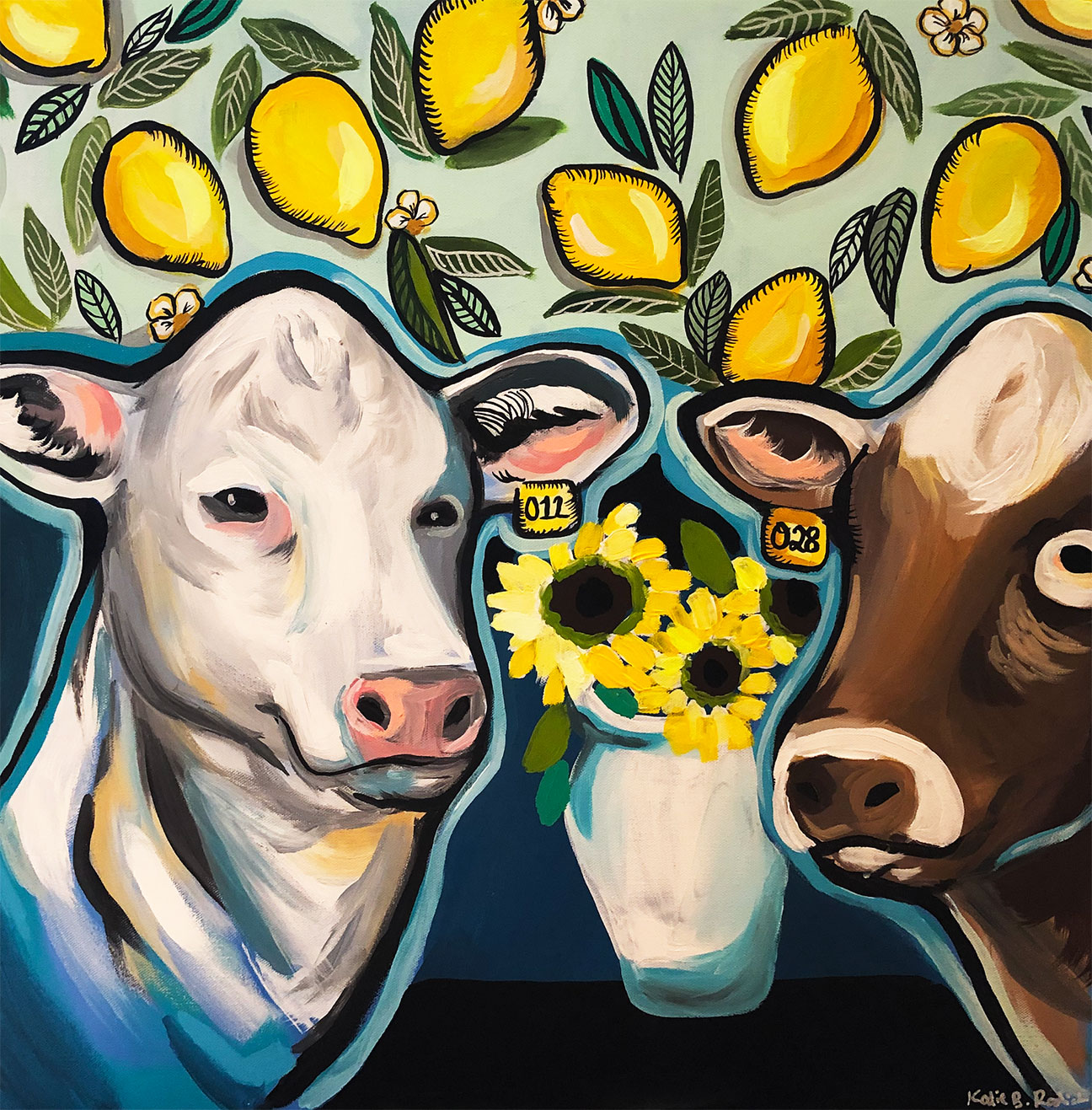The Gate Test
by Dave Loftin (art by Katie Rodick)
Buying a new cow can be a daunting experience. Where did she come from? Where has she been? Will she fit into your program? Can she raise a good calf? Will she be gentle and easy to handle? All of these questions are good to have the answers to before spending good money on what may be a lemon. The first three can be answered by getting to know the seller and visiting their ranch to see how their program compares to yours and what they may or may not be doing differently. If things are compatible, it is likely she will work for you as well.
Calf raising is just a guess until you can see a calf by her side. The most gorgeous, prize winning heifer may not produce babies that look as good as her. The plain Jane cow may raise an outstanding calf. That is why my preference at sales is to look at cows with a calf at side. Even if the calf is just a few weeks old, you can see if it is filled out and thriving or thin and scruffy. The cow’s udder when nursing a young calf will tell you a lot also. These are some of the reasons I prefer, when buying, to purchase young cows with a calf at side.
A gentle disposition is also a necessity at our place. My wife does the chores and is around the cows at calving time almost as much as I am. The kids were little when we first started buying. No matter how good a calf she can raise, a trampled wife or flattened child are not worth it.
Many years ago, when we would go to sales, I would study the catalog looking for the age of the cow when she calved, the calving intervals, EPDs, and any other information I could get. We would walk the aisles stopping at each pen containing a prospective purchase and I would ask my wife her opinion of the cow. “It has a cute face” was her most frequent response. Seeing me just shake my head, she learned to look at other things. After a few sales, she would walk the aisles by herself. I was very surprised and pleased when she came to me before a sale and suggested I should look at lot 17 on the back aisle as a prospect. “The baby is good and the cow is gentle” were her main reasons. I asked how she knew the cow was gentle and she said “I gave her the gate test”. “I opened the gate and started to walk into the pen and the mama with a new baby did not try to kill me”. It was then that I knew she really had been learning the business. From then on, any cow we bought was subjected to the “Gate Test”.
Years have passed and my wife doesn’t come to as many sales as she used to. Not when there is a chance to baby sit grand kids. She still helps with chores and the grand kids are frequent visitors so gentleness is still a priority. That is why, at a recent sale, I found myself opening gates and walking into pens to look at babies and udders and to use the gate test.
The sale was in Springfield and some of the large pens had three or more two year old pairs all with young calves less than a month old. Most of these were complacent mothers that kept an eye on their baby but were not too upset when I walked into the pen. There was one cow that wanted no part of strangers getting near her baby. If folks stood too long outside the gate she would charge the bars and back them off. She was getting a reputation for a while until she backed off into a corner of the large pen to nurse her baby. There was another pair in the pen that I was pretty interested in but I had not been able to get a good look at the baby. It was laying down on the far side of the pen from the protective mama so I took advantage of the nursing break to ease open the gate and walk back to the sleeping calf. I had one hand on the fence in case I had to climb in a hurry and one eye on the bovine Godzilla across the pen but she just watched as I crept along the far fence. I made it back to the sleeping calf and stepped away from the fence to get it up. As I touched the calf, its mother just watched and chewed her cud. That is why the sound of a freight train took a second to register. The nursing mother had abandoned her own baby and was charging across the pen to protect another. I tried to get back to the fence but as I turned, my foot found a fresh cow pie and with a slip and slither I was down with Mad Mama almost on top of me. She skidded to a stop and then, with a shake of her head, blew snot all over me and just walked away as if I wasn’t worth her time to smash. Needless to say, she failed the gate test. If the high ankle sprain and brace I wore for several weeks weren’t enough of a reminder, a line from a Jim Stafford song is: “You have to watch your step when the chips are down”.








